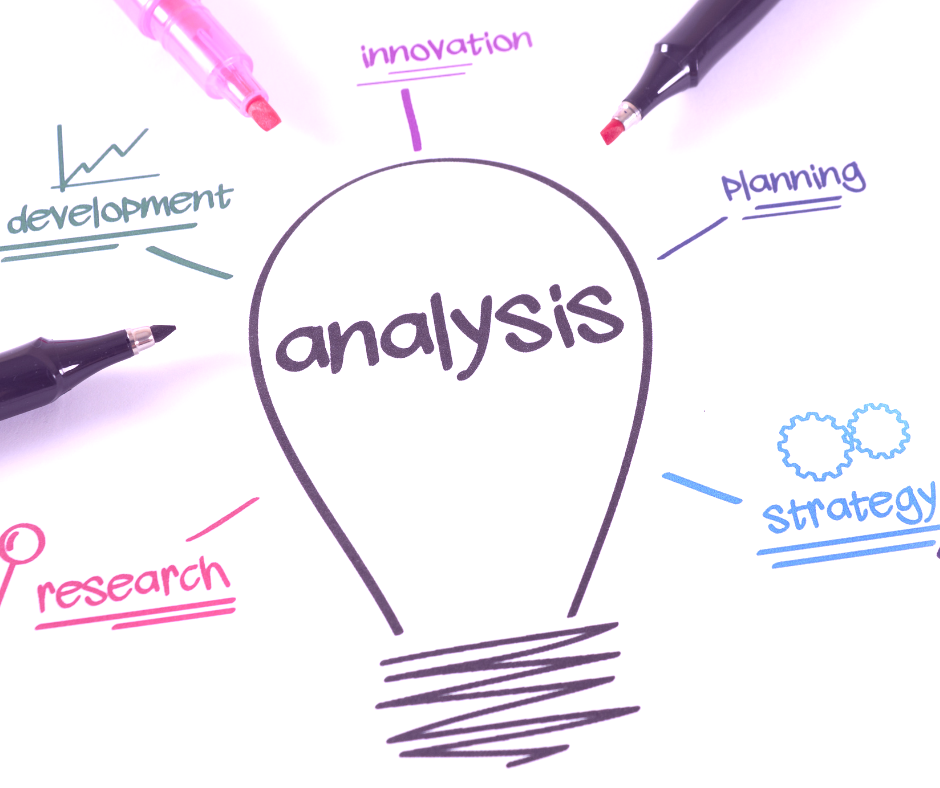The Art of Competitor Analysis to Propel Your Business Forward (P 2)
 By
Sameer Ahmed
·
5 minute read
By
Sameer Ahmed
·
5 minute read
Assalamu Alaikum [Peace be upon you], Today I'd like to expand on a previous topic we've discussed to bring you more strategies that you can incorporate in your arsenal towards business success.
Customer Feedback and Perception
When it comes to competitive business, understanding what customers think and their perception of competitors is like bread and butter. Gathering customer feedback on competitors is a proactive approach that provides us with invaluable insights into the strengths and weaknesses of competitor offerings. Surveys, online reviews, and social media serve as conduits for collecting information on firsthand experiences and opinions, allowing us to discern customer preferences, pain points, and areas for improvement.
Assessing how competitors are perceived by the market is just as important for decision-making. It involves delving into the narrative around competitors, covering aspects such as their brand reputation, how satisfied their customers are, and their overall market standing. Looking at online reviews and doing a sentiment analysis can reveal how customers feel about them, shedding light on things that contribute positively or negatively towards how they are perceived.
By constantly looking for and analyzing customer feedback, you can identify patterns, preferences, and trends in the market. Understanding how your competitors are perceived enables you to position yourself strategically, either by aligning with the customers' positive sentiments or by capitalizing on areas where your competitors may fall short.
SWOT Analysis of Competitors
Conducting a SWOT analysis (Strengths, Weaknesses, Opportunities, Threats) for every major competitor is a key factor in strategic planning, offering us a comprehensive understanding of the competitive landscape. A review like this enables us to outline the internal and external factors influencing our competitors, helping us to make better decisions.
 The first step is to assess the strengths of each major competitor. Things such as identifying their unique selling propositions, technological advantages, brand recognition, and any other factors adding to their market dominance. Understanding their strengths is the key to recognizing areas where they excel and where we may need to enhance our own capabilities.
The first step is to assess the strengths of each major competitor. Things such as identifying their unique selling propositions, technological advantages, brand recognition, and any other factors adding to their market dominance. Understanding their strengths is the key to recognizing areas where they excel and where we may need to enhance our own capabilities.
Similarly, evaluating their weaknesses is vital for our strategic positioning. Identifying if they have any operational inefficiencies, product limitations, or customer service gaps provides opportunities for us for differentiation and competitive advantage. Recognizing these weaknesses allows us to tailor our strategies to address and capitalize on their shortcomings.
Naturally our review would extend to identifying opportunities available to us, such as emerging trends, possible technological advancements, or unmet consumer needs. Recognizing these opportunities allows us not only to gauge the direction of the market but also to identify potential areas for innovation and growth.
Once you have an idea of the above, understanding the threats that they face completes the SWOT analysis. This includes having a look at external factors such as regulatory changes from government perhaps, or economic downturns, or increased competition. Recognizing these threats enables us to anticipate challenges in the landscape and proactively devise strategies to lessen the risks.
Technological and Innovation Assessment
Delving into a competitor's use of technology requires a deep exploration of the tools, platforms, and systems they use to enhance their products, services, and operations. By looking at aspects such as the adoption of advanced software, automation processes, and cutting-edge hardware, we can begin to understand the technological infrastructure they may possess and gives us insight into their efficiency, scalability, and potential areas for disruption.
 Assessing innovation and R&D activities is just as crucial to gauging their commitment to staying at the forefront of their industry. This information can be hard to come by, but we can get a brief understanding by looking at them in retrospect as well as keeping abreast with how often they innovate or introduce something new into their offerings. By understanding the innovation landscape of our competitors, we could anticipate shifts in trends, identify potential areas for collaboration or differentiation, and strategically position ourselves for long-term success.
Assessing innovation and R&D activities is just as crucial to gauging their commitment to staying at the forefront of their industry. This information can be hard to come by, but we can get a brief understanding by looking at them in retrospect as well as keeping abreast with how often they innovate or introduce something new into their offerings. By understanding the innovation landscape of our competitors, we could anticipate shifts in trends, identify potential areas for collaboration or differentiation, and strategically position ourselves for long-term success.
The technological and innovation assessment goes beyond merely identifying competitors' current technological prowess; but it serves as a predictive tool for future market dynamics. Recognizing whether competitors are investing in emerging technologies or exploring novel solutions allows you to align your strategies with the evolving landscape, ensuring you remain agile and responsive to any industry changes.
Marketing and Branding Strategies
Analyzing competitors' marketing channels and campaigns provides us with insights into where and how our rivals engage with their target audience. This involves an exploration of online and offline channels such as social media, traditional advertising, content marketing, and influencer partnerships. Understanding the effectiveness of these channels helps us identify opportunities for optimization and refinement within our own marketing approach.
 Equally significant is looking at brand strategies and customer engagement tactics employed by our competitors. Which is how they position their brand in the market, the messaging they are attempting to convey, and the emotional response they aim to create with their customers. Looking at customer engagement strategies shows us how competitors cultivate and maintain relationships with their customer base, whether through personalized communication, loyalty programs, or content.
Equally significant is looking at brand strategies and customer engagement tactics employed by our competitors. Which is how they position their brand in the market, the messaging they are attempting to convey, and the emotional response they aim to create with their customers. Looking at customer engagement strategies shows us how competitors cultivate and maintain relationships with their customer base, whether through personalized communication, loyalty programs, or content.
By having a good understanding of your competitors' marketing and branding strategies, you can identify gaps or areas for improvement in your. Successful tactics are proven to work and by recognizing these tactics it allows us to adopt best practices, while understanding less effective strategies helps in steering clear of potential pitfalls. This analysis serves as a foundation for the development of a unique and compelling brand identity.
Distribution Channels
Competitors may use a mix of distribution channels, such as direct sales, partnerships, e-commerce platforms, or third-party distributors. For example, someone in the consumer electronics industry might have a combination of brick-and-mortar stores, an online store, and partnerships with authorized resellers. This approach enables them to reach a wider customer base and cater to different preferences.
 Beyond just identification, looking at the efficiency of their distribution networks is very helpful for strategic decision-making. Assessing factors such as speed of delivery, reliability, and cost-effectiveness. You can explore whether your competitors have optimized their supply chain, implemented efficient logistics solutions, or leveraged technology to enhance their distribution efficiency. Understanding the strengths and weaknesses of your competitors' distribution networks allows you to identify potential areas for improvement within your own supply chain and delivery systems.
Beyond just identification, looking at the efficiency of their distribution networks is very helpful for strategic decision-making. Assessing factors such as speed of delivery, reliability, and cost-effectiveness. You can explore whether your competitors have optimized their supply chain, implemented efficient logistics solutions, or leveraged technology to enhance their distribution efficiency. Understanding the strengths and weaknesses of your competitors' distribution networks allows you to identify potential areas for improvement within your own supply chain and delivery systems.
In addition to this, it provides insights into customer satisfaction, as efficient distribution contributes to a positive overall experience. By benchmarking their distribution practices, you can adopt better practices, enhance your own distribution efficiency, and ultimately gain a competitive edge in the marketplace.
 Regulatory and Compliance Factors
Regulatory and Compliance Factors
This one, I’m certain, is a pain that many small business owners have to undergo. By understanding how competitors navigate regulations provides us with insights into norms, legal requirements, and government policies. We can do this by exploring things such as licensing, permits, environmental regulations, and other sector-specific compliance measures. By looking at your competitors' strategies in meeting regulatory standards, you can gain a clearer picture of industry expectations and potential challenges.
By staying abreast of your competitors' practices it enables you to once again benchmark your own efforts and strive for best-in-class standards. By incorporating this knowledge, it contributes to the development of better risk management, ensuring that you can anticipate and navigate regulatory changes effectively.
When you want to grow, these factors cannot be overlooked as larger businesses are constantly harnessing the power in these tactics and strategies day by day. Equipping yourself with the knowledge to do the same can not only elevate your growth as a business owner, but help you to keep swimming in the sea of market opportunities…
Posted by Sameer Ahmed

With over 15 years in media production and 10 years in business, Sameer Ahmed is a seasoned expert in audio, video, and creative direction. His mastery of these fields, coupled with strong business acumen, has made him a leader in brand marketing services. Sameer's articles draw on his extensive experience to offer insights that drive innovation and quality, making his content a valuable resource for anyone looking to distinguish their brand.




